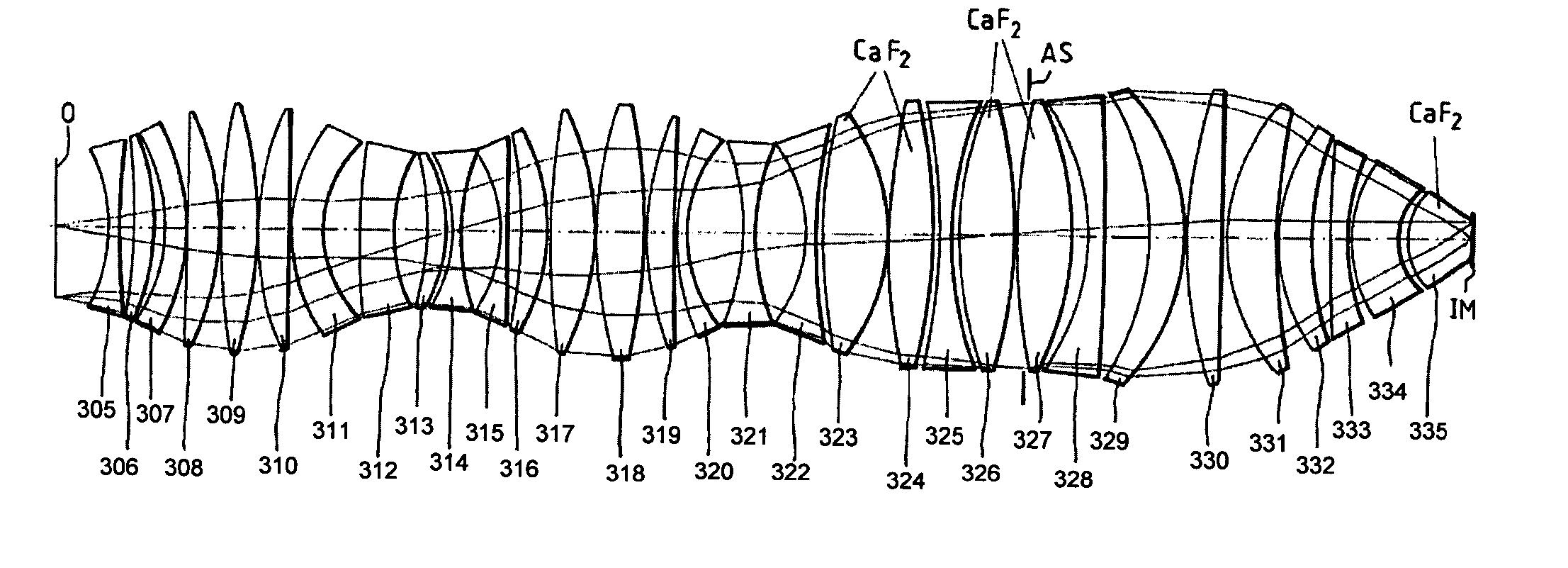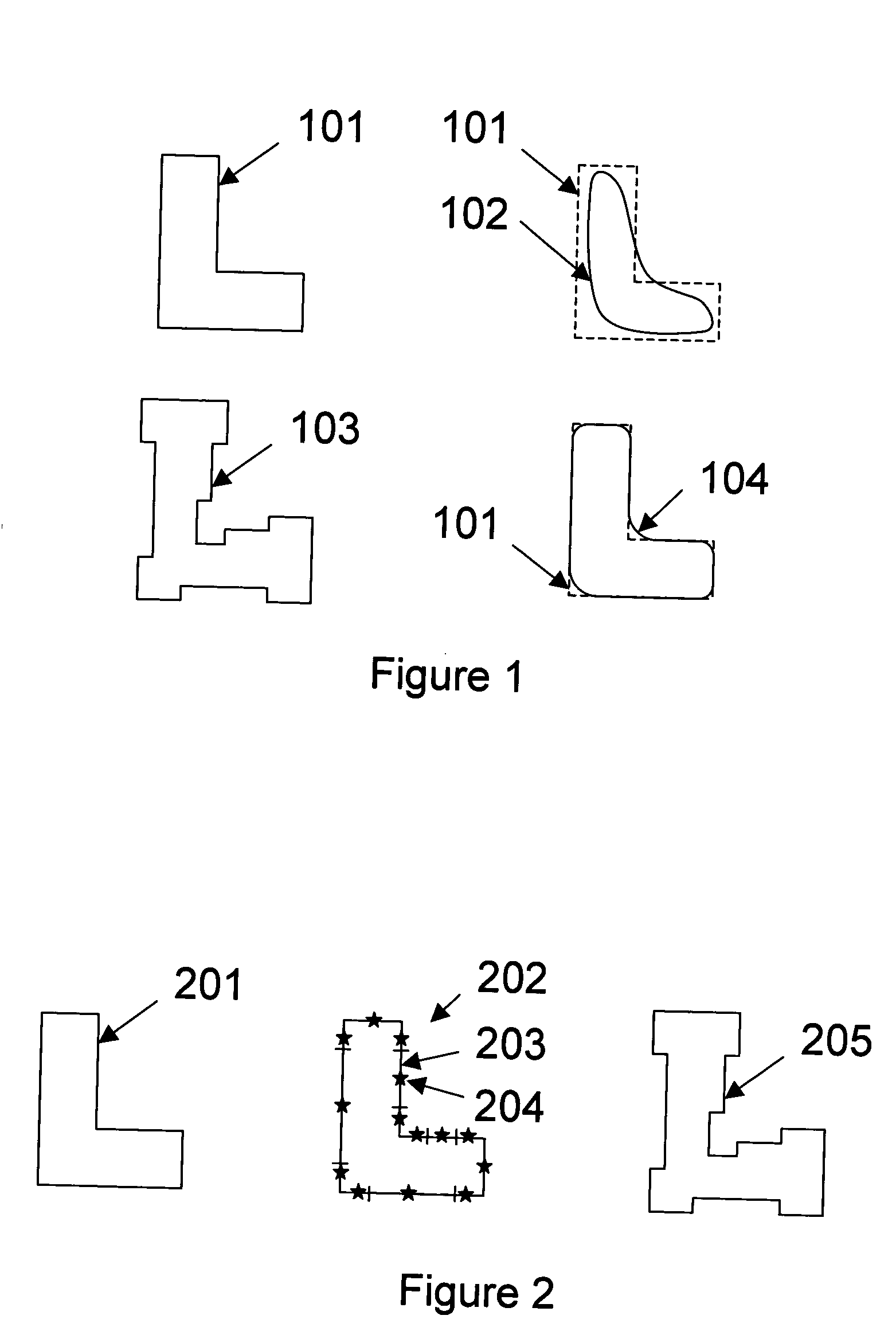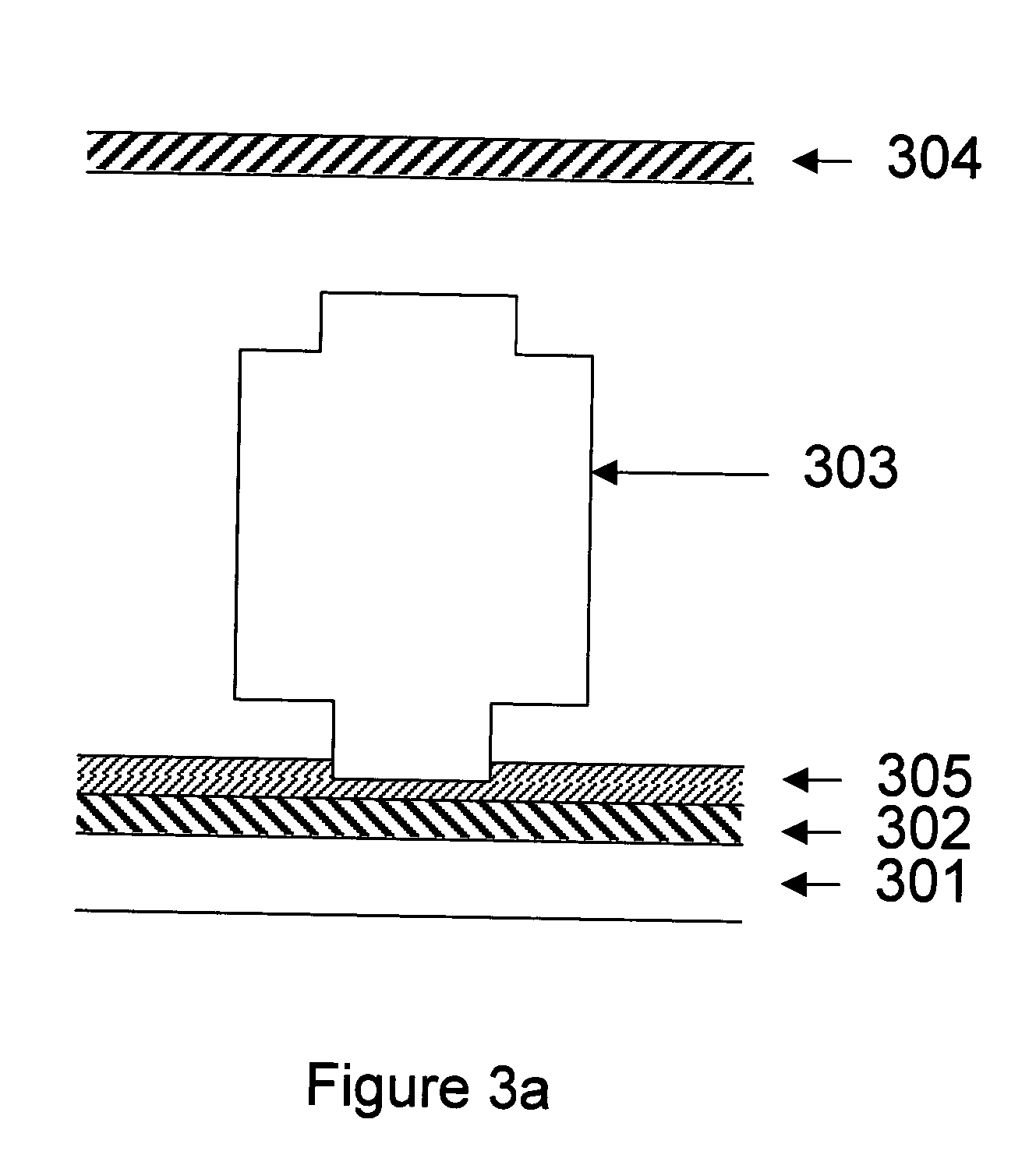Contact printing using a magnified mask image
a technology of contact printing and mask image, which is applied in the direction of microlithography exposure apparatus, photomechanical treatment, instruments, etc., can solve the problems of affecting the quality of contact printing, so as to prevent the adhesion of the lens element
- Summary
- Abstract
- Description
- Claims
- Application Information
AI Technical Summary
Benefits of technology
Problems solved by technology
Method used
Image
Examples
Embodiment Construction
A technique described in FIG. 3a was developed to address the issues encountered with immersion lithography. A wafer 302, coated with a resist 305 is placed on the stage 301. The projection lens 303 projects an image of the mask 304 inside the resist 305. The resist layer is deformable so that the bottom surface of the lens is pushed inside the resist layer at a certain distance from the top of the nominal resist height. The depression in the resist can be obtained by displacement if the resist is a liquid or by compression if the resist is made of a deformable material. The quality of the contact between the lens and the resist is guaranteed by the fact that the lens is pushed inside the resist in a similar fashion as in the case of nano-imprint lithography. In this case, the absence of patterns at the surface of the lens or at the surface of the resist allows for a better contact with no gaps. Inserting an immersion lens as described in the U.S. Pat. No. 5,121,256 is not required ...
PUM
| Property | Measurement | Unit |
|---|---|---|
| wavelength | aaaaa | aaaaa |
| wavelength | aaaaa | aaaaa |
| wavelengths | aaaaa | aaaaa |
Abstract
Description
Claims
Application Information
 Login to View More
Login to View More - R&D
- Intellectual Property
- Life Sciences
- Materials
- Tech Scout
- Unparalleled Data Quality
- Higher Quality Content
- 60% Fewer Hallucinations
Browse by: Latest US Patents, China's latest patents, Technical Efficacy Thesaurus, Application Domain, Technology Topic, Popular Technical Reports.
© 2025 PatSnap. All rights reserved.Legal|Privacy policy|Modern Slavery Act Transparency Statement|Sitemap|About US| Contact US: help@patsnap.com



